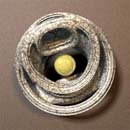|
Digital Fine ArtThe phrase "digital fine art" is new to most people, so let me begin with a basic definition.Encyclopedia Britannica defines art as "the use of skill and imagination in the creation of aesthetic objects, environments, or experiences that can be shared with others," and this is exactly what I strive for with each of my images. Fine art is any art that uses high quality materials and substrates to provide an extremely long lifespan for the work. Digital fine art is the digital production (or reproduction) of fine art prints using archival materials and the same conservation framing techniques used by art galleries and museums worldwide. The Creative ProcessI use computer software that allows me to create each image completely from scratch without the infusion or manipulation of any external image sources such as photography. My creative process can generally be broken down into five distinct phases:
Drawing Concept SketchesI begin my works by drawing concept sketches using pencil and paper, and I usually make notes on these sketches regarding my ideas about lighting conditions, colors, texturing, etc. After I'm happy with the design I move to the computer to begin the digital creation process.Implementing the Concept at the ComputerI use 3d computer software to completely create, in virtual 3d space, all of the objects presented in my concept sketches. I then place these objects into the context of a composition based on the sketches. I write custom software tools, in a variety of programming languages, to help with complex mathematical calculations and object placement.After the geometries of the objects are finalized I assign various materials to them to simulate the properties of glass, metal, stone, or whatever the concept demands. Even when there are multitudes of the same type of object, I strive to make each object unique and individual in both form and texture. Rendering the ImageDuring the final creative phase I render a multitude of small-format test images, repeatedly adjusting the viewpoint, lighting, colors, composition, and materials until the vision that I see in my mind is made visible on the computer monitor. This process is highly complex and demanding, both technically and artistically. When I'm finally satisfied that the concept is complete I render the final image at very high resolution. Depending on various factors in the image design, the final render can take anywhere from 250 to 1500 hours.Post-Processing a Digital MasterOnce the high-resolution rendering is complete I prepare a master digital image file by performing any overall color correction that I find necessary. At this time I adjust contrast, color saturation, and very rarely, perform overall color shifts. The resulting full-size digital master image file is burned to CD-ROM and sent to a digital photo lab for printing the various sizes of my limited edition and open edition prints.Making Museum-Quality PrintsAll of my prints are Luminage Direct-Digital Prints, produced on a CSI LightJet 5900, which uses high resolution RGB lasers to expose FujiColor Crystal Archive Digital Emulsion photographic paper, offering the highest resolution color output currently available. The exposed paper is then processed with standard photographic chemistry. This continuous-tone process makes my computer-generated prints exceedingly sharp, colorful, and brilliant, resulting in a combination of color quality and accuracy, print longevity, and resolution that cannot be matched by any other process.The FujiColor Crystal Archive paper has been rated by Wilhelm Imaging Research, Inc. to a life expectancy of more than 80 years before appreciable fading is noticed, making it the one color photographic print material with the longest life on the market today. My limited edition prints are professionally vacuum-mounted on museum quality acid-free backing board and matted with museum quality 100% cotton rag acid-free mat board. |
| All content copyright © 2004-2025 Robert W. McGregor. All rights reserved. |




